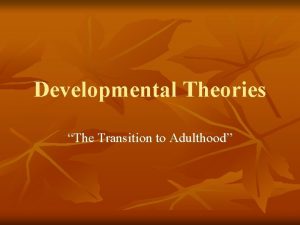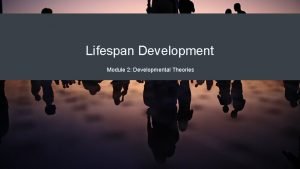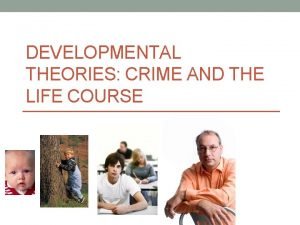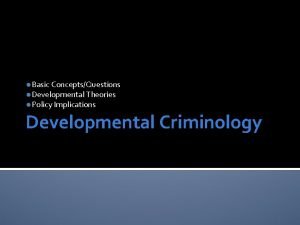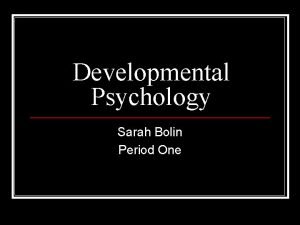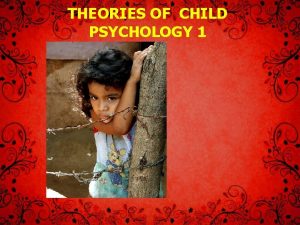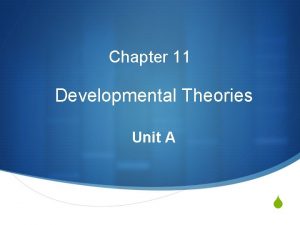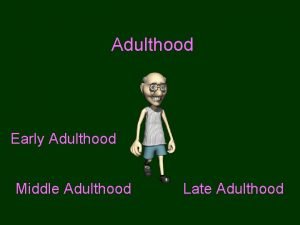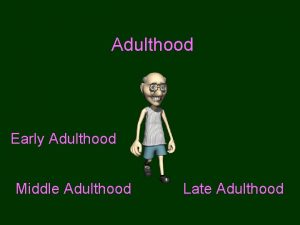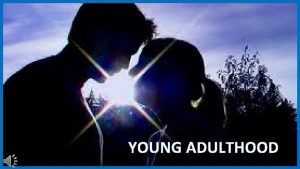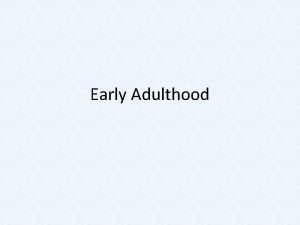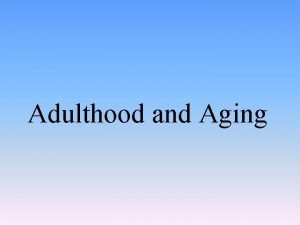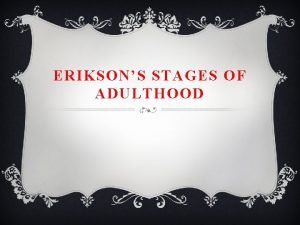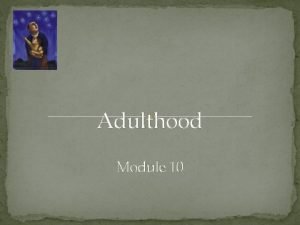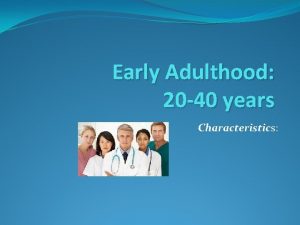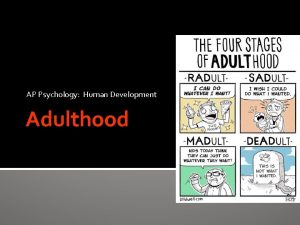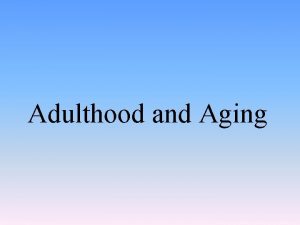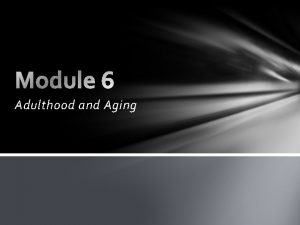Developmental Theories The Transition to Adulthood Developmental Theories













- Slides: 13

Developmental Theories “The Transition to Adulthood”

Developmental Theories n n n Attempt to identify patterns of life and describe growth or changes in human behaviour as individuals mature Look at either how people are the SAME, or how people are DIFFERENT Analyze the behaviour of large groups of individuals over a long period of time Some suggest development occurs in stages according to readiness, and some suggest the stages are age related. Still others, propose that growth and development occurs not in definite stages, but along a gradual continuum. They all AGREE that behaviour results from inner psychological changes in response to life circumstances

“The 4 Clocks” Psychological Clock Social Clock Biological Clock Chronological Clock

Erikson’s Eight Stages n n He was the first psychologist to describe predictable stages of development He depicted 8 stages in which an individual’s identity emerges and matures Each stage presents a dilemma that challenges the person By overcoming the dilemma, the individual acquires the basic skills needed to progress to the next stage

Erikson n n n During adolescence the dilemma is “identity vs role confusion” Resolution = FIDELITY During early adulthood the dilemma is intimacy vs isolation Resolution = LOVE During adulthood the dilemma is generativity vs stagnation Resolution = CARING

Jane Loevinger’s Ego Development n 10 stages in the formation of the ego n n Ego= understanding of self Full Ego development means have an “autonomous self” Stages are determined by psychological clock Adults are at a transitional “self aware level”, between the conformist stage and the conscientious stage

The Family Life Cycle Theory n n Early adulthood is the stage when individuals are launched from the family of origin 3 developmental tasks must be mastered 1) young adults must separate from the family of origin (individuation) 2) young adults must develop new intimate relationships 3) young adults must make their first commitment to a career

Daniel Levinson’s Seasons of Life n n n The “Era of Early Adulthood” lasts 25 years The stages are AGE BASED Early Adult Transition = 17 -22 n Adolescents must change their attachment with parents, not necessarily physical separation

Daniel Levinson’s Seasons of Life n Entering the Adult World = 22 -28 n 4 tasks of this stage n n n 1) form a “dream” and give it a place in life structure 2) form mentor relationships 3) form and occupation 4) form love relationships, marriage and family. Entering the Adult World = 22 -28 Age 30 Transition = 28 -33 n Individuals re-evaluate their life strucures and the “dream”

Klaus Riegel’s Theory n n Looks at how individual internal and external changes can influence devepment (explains how people are different) There are 4 interrelated internal and external dimensions of development n n 1) individual/psychological 2) individual/biological 3) cultural/sociological 4) environmental

Leonard Pearlin’s Theory of Psychological Distress n n Transitions in adulthood are not a series of transitions from one stable change to another, but a lifetime of continuous change in which individuals may experience periods of stability 4 Elements determine our path n n 1) individual characteristics 2) range of coping skills 3) social support 4) nature and timing of stress

Leonard Pearlin n People can change their life structure at any time We are able to anticipate role changes because our society makes events predictable Cohort effect – changes in behaviour result from socialized responses to common social clock, rather than from age-linked inner changes

Next Steps? n n Which of these theories do you find most interesting or agree with the most? Tomorrow you will be starting an assignment that requires you to do further research on one of these theories and find secondary sources; plus create a class handout. Are there any other relevant theories out there on adolescence and the transition to adulthood?
 Physical changes in early adulthood
Physical changes in early adulthood Daniel levinson stages
Daniel levinson stages Developmental theories
Developmental theories Developmental criminology
Developmental criminology Developmental theories
Developmental theories Loebers pathway model
Loebers pathway model Sarah bolin
Sarah bolin Ego centerism
Ego centerism Chapter 11 developmental theories
Chapter 11 developmental theories Phối cảnh
Phối cảnh Tỉ lệ cơ thể trẻ em
Tỉ lệ cơ thể trẻ em Các châu lục và đại dương trên thế giới
Các châu lục và đại dương trên thế giới Thế nào là hệ số cao nhất
Thế nào là hệ số cao nhất Hệ hô hấp
Hệ hô hấp

